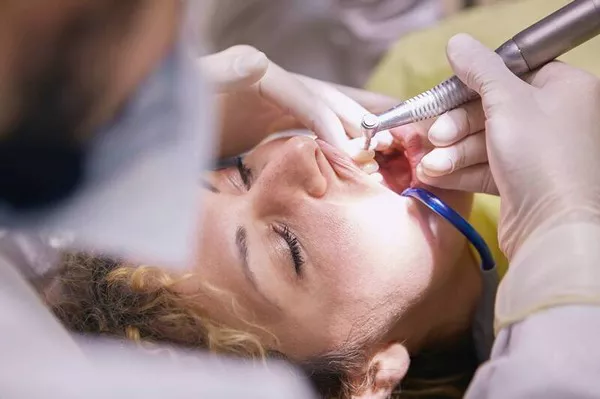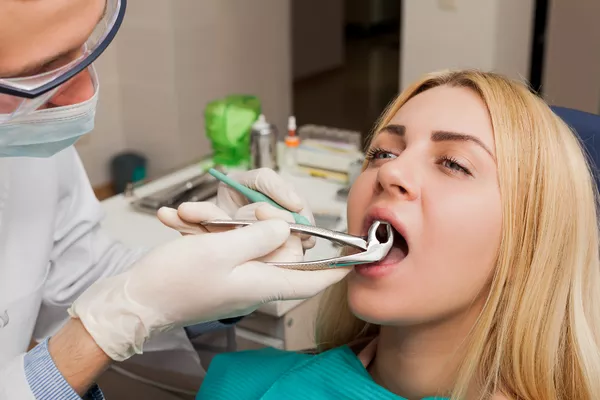A dazzling smile can leave a lasting impression, but yellow stains between teeth can dampen your confidence. To achieve a radiant smile, it’s essential to understand how to get rid of these stains effectively. Additionally, dental deep cleaning is a procedure that can address deeper dental issues and contribute to a healthier mouth. In this article, we will explore various methods to remove yellow stains between teeth and shed light on the costs associated with dental deep cleaning.
How to Get Yellow Stains Out Between Teeth
Maintain Proper Dental Hygiene:
The first step to achieving a brighter smile is to maintain proper dental hygiene. Consistent and correct oral care practices can prevent and reduce yellow stains between teeth. Follow these essential tips:
a) Regular Brushing: Brush your teeth at least twice daily, using a soft-bristled toothbrush and fluoride toothpaste. Pay extra attention to the areas between teeth.
b) Floss Daily: Flossing helps remove plaque and debris from between teeth where brushing cannot reach. This helps prevent stains and maintains healthy gums.
c) Limit Stain-Causing Foods: Reduce your consumption of coffee, tea, red wine, and dark-colored fruits, which are known to contribute to tooth staining.
d) Drink Water After Eating: Swishing water in your mouth after eating or drinking can help wash away food particles and reduce the chance of staining.
Whitening Toothpaste and Mouthwash:
Whitening toothpaste and mouthwash can be effective in removing surface stains. These products contain mild abrasives that gently polish the teeth, helping to whiten your smile over time. Look for products approved by dental associations and follow the instructions for safe and effective use.
Home Remedies:
Several home remedies are believed to help reduce yellow stains between teeth. While these methods may lack scientific evidence, some people find them helpful:
a) Baking Soda Paste: Create a paste using baking soda and water, and gently brush your teeth with it. Baking soda’s mild abrasiveness may help remove surface stains.
b) Apple Cider Vinegar Rinse: Mix water and apple cider vinegar and swish it in your mouth before brushing. Note that apple cider vinegar is acidic, so use this method sparingly and rinse thoroughly afterward.
c) Oil Pulling: Swish coconut oil or sesame oil in your mouth for a few minutes before spitting it out. Oil pulling is believed to help remove toxins and bacteria from the mouth.
Professional Teeth Whitening:
For more stubborn stains, professional teeth whitening is a safe and effective option. A dentist can use stronger bleaching agents than over-the-counter products, providing noticeable results in a short period. Two common methods include:
a) In-Office Whitening: This procedure involves applying a powerful bleaching agent to your teeth and activating it with a special light. In-office whitening can lighten teeth by several shades in a single session.
b) Take-Home Whitening Kits: Your dentist can provide custom-made trays and a milder bleaching gel for you to use at home. This method may take longer than in-office whitening, but it is more convenient for some individuals.
How Much Do Dentists Charge for Deep Cleaning?
What is Deep Cleaning?
Deep cleaning, also known as scaling and root planing, is a dental procedure recommended for patients with gum disease (gingivitis or periodontitis). It involves removing plaque, tartar, and bacteria from below the gumline and smoothing the tooth roots to promote gum reattachment.
Factors Affecting Cost:
The cost of deep cleaning can vary depending on several factors:
a) Geographic Location: Dental costs can differ significantly based on the region and local economic factors.
b) Severity of Gum Disease: The extent of gum disease and the number of affected teeth will influence the cost of deep cleaning.
c) Dentist’s Expertise: Experienced dentists or periodontists may charge higher fees for their specialized services.
d) Insurance Coverage: Dental insurance plans may cover a portion of the cost, depending on the type and severity of gum disease.
Average Costs:
The cost of deep cleaning typically ranges from $100 to $400 per quadrant (one-fourth of the mouth). A full mouth deep cleaning can range from $400 to $1600, depending on the factors mentioned above.
Additional Treatments:
In some cases, additional treatments such as local anesthesia, follow-up visits, or prescribed medications may be necessary, adding to the overall cost.
Preventive Measures:
To avoid the need for deep cleaning, focus on preventing gum disease through regular dental check-ups and cleanings. Maintain proper oral hygiene practices and address any oral health concerns promptly.
Conclusion
Achieving a dazzling smile free from yellow stains between teeth involves maintaining properdental hygiene, using whitening products, and considering professional teeth whitening if necessary. For individuals with gum disease, deep cleaning is a crucial procedure that can improve oral health and prevent further complications. The cost of deep cleaning may vary based on factors such as location, severity of gum disease, and insurance coverage. By following these tips and considering deep cleaning when needed, you can enjoy a radiant smile and optimal oral health for years to come. Remember to consult your dentist for personalized advice and the best treatment options for your individual needs.
Related Topics:




























